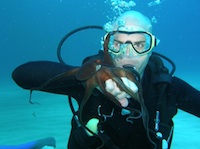Designing a Future-Proofed Makerspace – Intro
Part 1 – Designing a Future-Proofed Makerspace – Intro
 From tinkering labs to fabrication studios, “Makerspaces” are popping up at schools across the country. While these spaces, often filled with tools like 3-D printers and laser cutters, are replacing tech labs at many schools, some educators question if these new classrooms are just a passing fad or if they truly represent the future of hands-on learning.
From tinkering labs to fabrication studios, “Makerspaces” are popping up at schools across the country. While these spaces, often filled with tools like 3-D printers and laser cutters, are replacing tech labs at many schools, some educators question if these new classrooms are just a passing fad or if they truly represent the future of hands-on learning.
I explored this topic with the Burke’s Makery Team as part of a panel session at the International Society of Technology Educators (ISTE) annual conference in Denver, CO. This series of ten posts will explore key ideas that will help schools and educators design makerspaces that will not only be relevant today but will also stand the test of time.
Read the rest of this entry →


 Today I had the incredible opportunity to go pick up my school’s new pair of Google Glass. As part of the Glass Explorer Program, we’ll have an early edition of the glasses to try out before the glasses go on sale to the public later this year. Being in the Bay Area, my colleague Jenny and I took advantage of the option to trek down to Google’s San Francisco offices where we were able to pick up the glasses with a one-on-one tutorial and set-up session with a Glass expert.
Today I had the incredible opportunity to go pick up my school’s new pair of Google Glass. As part of the Glass Explorer Program, we’ll have an early edition of the glasses to try out before the glasses go on sale to the public later this year. Being in the Bay Area, my colleague Jenny and I took advantage of the option to trek down to Google’s San Francisco offices where we were able to pick up the glasses with a one-on-one tutorial and set-up session with a Glass expert. For those of you who aren’t familiar with the technology, the glasses (officially called “Google Glass”) consist of a small screen and camera that are contained within a pair of lens-free glass frames. The screen sits about one inch away from your eye, just above your line of sight. Thanks to the screen, a set of sensors, a camera, GPS sensor, and a data connection, Google Glass is able to take pictures and video, respond to user voice commands, and display information related to the user’s location. For a basic example, to take a picture, simply look up to trigger the glasses then say “Ok glass, take a picture.” The device captures the user’s field of view in a picture which is then uploaded to the cloud. Things get more interesting when using glass apps – imagine sitting in a cafe in Paris, looking at a cafe menu while wearing Google Glass. Without hesitation, the menu item you’re looking at appears translated into English on the screen of the glasses.
For those of you who aren’t familiar with the technology, the glasses (officially called “Google Glass”) consist of a small screen and camera that are contained within a pair of lens-free glass frames. The screen sits about one inch away from your eye, just above your line of sight. Thanks to the screen, a set of sensors, a camera, GPS sensor, and a data connection, Google Glass is able to take pictures and video, respond to user voice commands, and display information related to the user’s location. For a basic example, to take a picture, simply look up to trigger the glasses then say “Ok glass, take a picture.” The device captures the user’s field of view in a picture which is then uploaded to the cloud. Things get more interesting when using glass apps – imagine sitting in a cafe in Paris, looking at a cafe menu while wearing Google Glass. Without hesitation, the menu item you’re looking at appears translated into English on the screen of the glasses.
